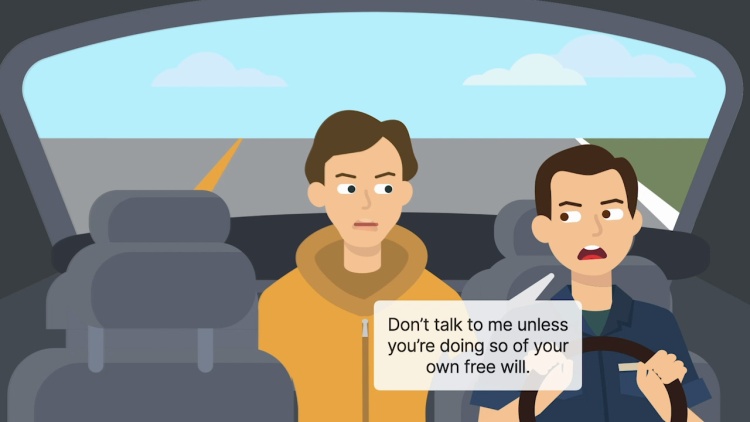Oregon v. Bradshaw
United States Supreme Court
462 U.S. 1039 (1983)
- Written by Salina Kennedy, JD
Facts
James Edward Bradshaw (defendant) was arrested in connection with a car accident in which a boy died. Bradshaw initially denied involvement in the accident; he was then informed of his Miranda rights and invoked his right to counsel. At this point, officers stopped questioning Bradshaw. Later, while Bradshaw was being transferred from the police station to the jail, he asked a police officer, “Well, what is going to happen to me now?” The officer reminded Bradshaw that he had invoked his right to counsel and told Bradshaw that the officer did not want him to talk unless it was an exercise of free will. Bradshaw said he understood, and the two had a conversation in which the officer suggested that Bradshaw help himself by taking a polygraph. Bradshaw agreed to do so. The next day, Bradshaw signed a waiver of his Miranda rights and took a polygraph test. At the end of the test, the examiner told Bradshaw that he did not believe Bradshaw was telling the truth. Bradshaw then confessed to driving drunk and causing the accident that killed the boy. At trial, Bradshaw moved to suppress his confession. The trial court denied his motion, and Bradshaw was convicted of first-degree manslaughter and other charges. The Oregon Court of Appeals reversed Bradshaw’s conviction, holding that the confession should have been excluded from evidence because it was obtained in violation of his rights under the Fifth Amendment to the United States Constitution. The United States Supreme Court granted certiorari.
Rule of Law
Issue
Holding and Reasoning (Rehnquist, J.)
Concurrence (Powell, J.)
Dissent (Marshall, J.)
What to do next…
Here's why 899,000 law students have relied on our case briefs:
- Written by law professors and practitioners, not other law students. 47,000 briefs, keyed to 994 casebooks. Top-notch customer support.
- The right amount of information, includes the facts, issues, rule of law, holding and reasoning, and any concurrences and dissents.
- Access in your classes, works on your mobile and tablet. Massive library of related video lessons and high quality multiple-choice questions.
- Easy to use, uniform format for every case brief. Written in plain English, not in legalese. Our briefs summarize and simplify; they don’t just repeat the court’s language.





